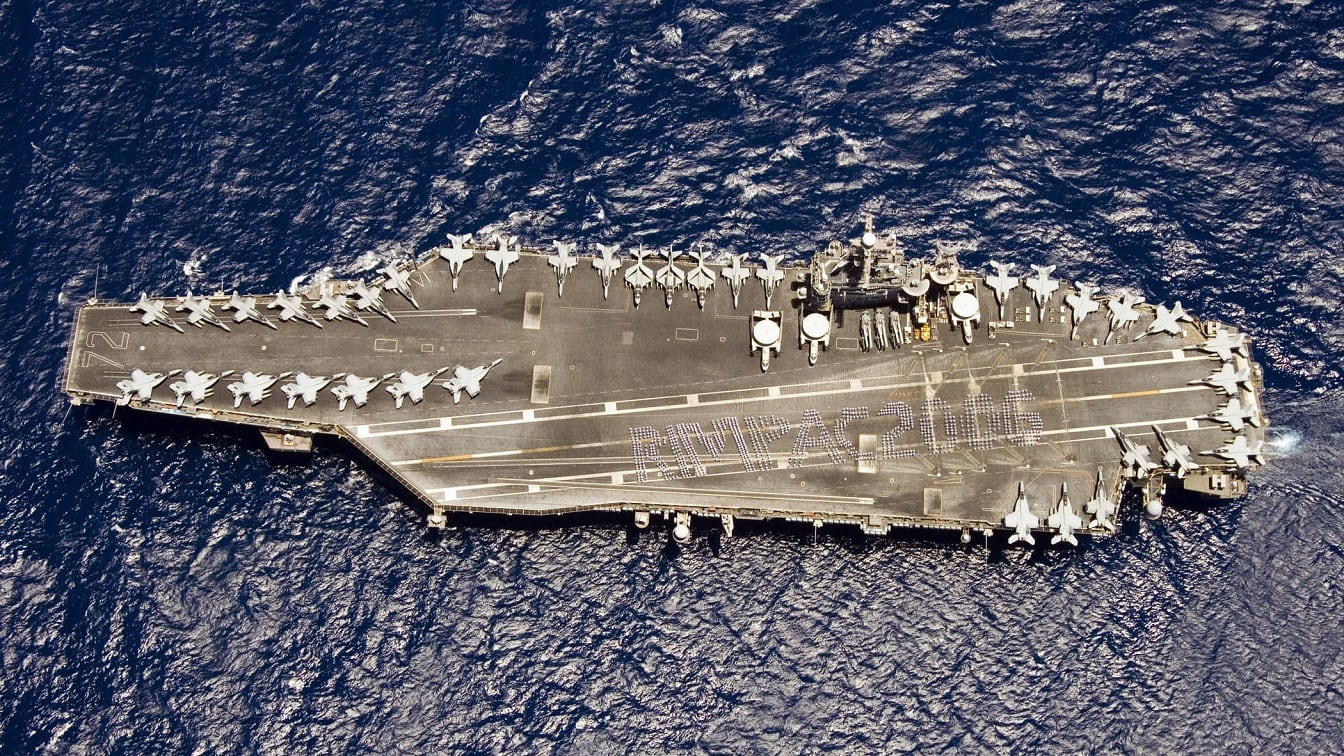In a rare show of force, the U.S. and its allies have deployed five flattops, including two nuclear aircraft carriers, in the South China Sea, physically disputing China’s illegitimate claims in the region.
The flocking of so many flattops in one area translates into a potent long-range strike capability. Indeed, put together, the five flattops’ air wings can deploy more aircraft than most countries in the world.
Gosh, Who Put All These ‘Aircraft Carriers’ Here?
The potent naval force currently operating in the South China Sea is comprised of the USS Carl Vinson aircraft carrier, USS Abraham Lincoln aircraft carrier, USS Essex amphibious assault ship, USS American amphibious assault ship, and the Japanese JS Hyūga helicopter destroyer.
With almost 15,000 sailors and marines on board, the joint naval force will be conducting surface and air operations, including enhanced maritime communication operations, anti-submarine warfare operations, air warfare operations, replenishments-at-sea, cross-deck flight operations, and maritime interdiction operations.
“Our ability to rapidly aggregate and work collectively alongside CSG 3, highlights the U.S. Navy’s ability to deliver overwhelming maritime force, when called upon, to support a free and open Indo-Pacific region. We are committed to ensuring the lawful use of the sea and free flow of commerce while deterring those who challenge the shared vision of a free and open Indo-Pacific now and into the long-term future,” Rear Admiral Dan Martin, the commanding officer of Carrier Strike Group 1, said in a press release.
If these weren’t enough warships, each capital ship is accompanied by smaller supporting vessels, including the Ticonderoga-class guided-missile cruisers USS Mobile Bay and USS Lake Champlain and Arleigh Burke-class guided-missile destroyers USS Gridley, USS Chafee, and USS Spruance
“Training with Carrier Strike Group 1 in the South China Sea is a tremendously valuable opportunity. Operations like these allow us to improve our combat credible capability, reassure our allies and partners, and demonstrate our resolve as a Navy to ensure regional stability and counter malign influence,” Rear Admiral J.T. Anderson, the commanding officer of Carrier Strike Group 3, stated.
Beyond Aircraft Carriers: The F-35 Fighter Jet Reaches Another Milestone
But beyond numbers, the joint naval force can field some of the most advanced aircraft in the world. Combined, the five capital warships have almost 30 F-35B and F-35C Lightning II fighter jets, signifying the largest naval accumulation of the fifth-generation aircraft in one area in history and also the first time three flattops carrying F-35s operate together.
In specific, the USS Carl Vinson carries ten Navy F-35Cs, the carrier version of the fighter jet, the USS Abraham Lincoln packs ten Marine Corps F-35Cs, and the USS America carries six Marine Corps F-35Bs, the short takeoff-vertical landing (STOVL) version of the fighter jet.
If that wasn’t enough, in addition to the F-35s, the five flattops carry scores more aircraft, including F/A-18F/E Super Hornet, EA-18G Growler, E-2D Advanced Hawkeye, C-2A Greyhound, MH-60S Knight Hawk, and MH-60R Sea Hawk fixed-wing and rotary-wing aircraft.
1945’s New Defense and National Security Columnist, Stavros Atlamazoglou is a seasoned defense journalist specializing in special operations, a Hellenic Army veteran (national service with the 575th Marine Battalion and Army HQ), and a Johns Hopkins University graduate. His work has been featured in Business Insider, Sandboxx, and SOFREP.

